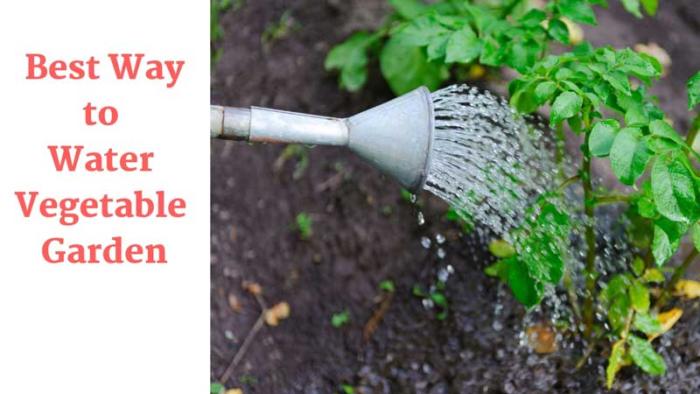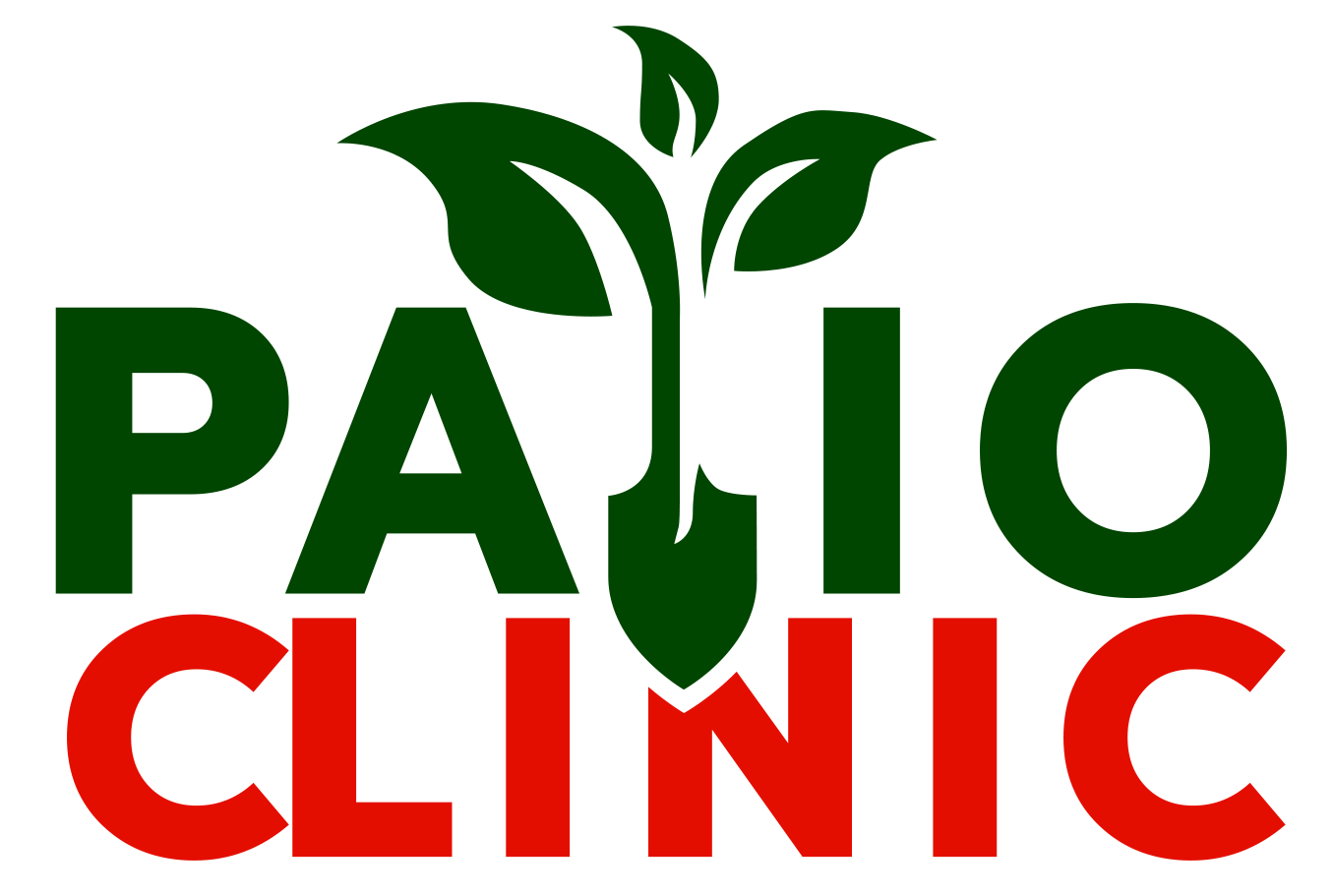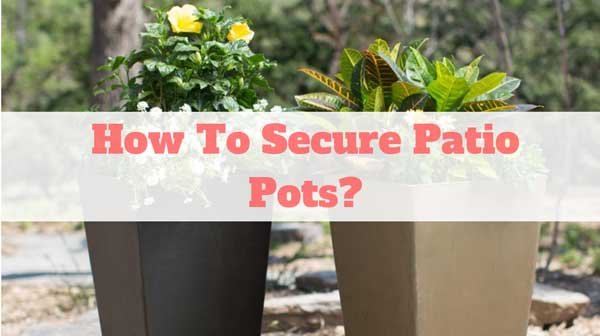
5 Best Ways to Water Vegetable Garden That You Should Know
Irrigation is one of the key aspects when gardening.
As you may know,
there are different types of irrigation we can use.
Today
we will talk about the most important ones which are best ways to water vegetable gardens, such as drip irrigation, sprinkler irrigation or irrigation with exudation tape.
Types of Vegetable Garden Irrigation
Although we have already seen in other articles explaining different types of irrigation of vegetable plants and the most important aspects that we must take into account when choosing them,
today we are going to summarize the main types of irrigation that can be used to provide water to our vegetable crops.
Quick Navigation
1. Irrigation by Dripping |Importance of Drip Irrigation

It is perhaps one of the types of irrigation most used in our vegetable gardens. Partly because of its comfort (because if we have an automatic watering programmer which waters the garden,
we will not have to worry about wasting time or remembering when to do it, the programmer will do it for us),
but also because it is a method that uses water efficiently (without wasting it). In addition, it avoids the incidence of diseases caused by fungi, and
also, it only moistens the part of the soil that interests us, where the roots are, and does not wet the leaves or the rest of the plant.
2. Watering by the Use of Watering Can

It is one of the most traditional types of irrigation, although the use of water is much less efficient (more is spent to irrigate the same vegetable plant),
it doesn’t stop it though from being effective (the water reaches the roots well since it keeps wetting the nearby land to them).
The use of watering cans has proven to be good on most vegetables because the water seeps into the easily and vegetable roots absorb it.
The use of watering cans has proven to be good on most vegetables because the water seeps into the easily and vegetable roots absorb it.
it doesn’t stop it though from being effective (the water reaches the roots well since it keeps wetting the nearby land to them).
The use of watering cans has proven to be good on most vegetables because the water seeps into the easily and vegetable roots absorb it.
3. Sprinkler Irrigation and its Variants |Sprinkler Irrigation Advantages

The aerial part of the plants gets wet so you have to be careful with fungi spread, but it is interesting in the fight against some pests like thrips since these insects find it annoying the water falling on them and leaving the plants.
The system is slightly more complex than the drip system and, therefore, somewhat more expensive. The amount of water used with this method is greater, but there is still a saving of water compared to other types of irrigation such as furrows.
The micro- sprinkler system is a variant of sprinkler irrigation but, as you can imagine, in small. The water curtains that is expelled by the sprinklers do not have such a large reach, so it spends less water to achieve the same goal.
For the garden is perfect since horticultural have the little volume so the micro-sprinklers will be enough.
Also, the irrigation by diffusion is very similar, with the difference that the droplets of water propelled are much smaller.
It is like a mist, which makes the humidity of the plant’s environment higher. It can be interesting for those crops that require high levels of humidity.
4. Floating Irrigation

The advantages: its simplicity (no irrigation pipes, no furrows to be made) and its cost.
Also that it can be useful to water vegetables in slope, although the problem is that a lot of water is spent, especially if it is not used or reused.
Another disadvantage is that it favors erosion (the earth can be washed away by the water when it descends), so the structure of the soil, so important for the roots, is altered.
5. Irrigation by Exuding
The irrigation of garden by use of exudative tape is less known than other types of irrigation but is highly recommended.
The saving of the water and its efficient use is one of the most important advantages (in this aspect it is similar or even greater than the drip irrigation).
It consists of porous flattened tubes or pipes through which the water circulates, like the drip, but which expel small droplets along its entire length.
Besides the saving of water, this system has other advantages, such as that the pipes can be buried, improving the aesthetics of the garden.
Also that, unlike drip irrigation, it is not necessary to change the location of the holes every year, when we rotate crops and the plants are located in different places since water is expelled throughout the pipe.
For this reason, irrigation is very homogeneous even for sloping orchards.
The Irrigation System According to the Type of Vegetable Plant
The vegetables, under normal circumstances, require irrigation of 1 liter per plant and day, or if it is in a cultivation table, for 10 liters of the substrate; but we will also consider the form and type of plants to be able to make some special considerations:
- The broadleaved herbs and juicy leaves and vegetables are grown for its leaves like spinach, lettuce, endive, cauliflowers, etc., will require more abundant irrigation (about 2 liters per plant) and regular watering. To define the optimal automatic irrigation system for this type of plants, it is best to consult a professional garden center, which drips irrigation kit will be suitable, determining the diameter of the optimal irrigation hose, the type of irrigation automatic programmer we need, etc.
- In plants with fleshy fruits such as tomatoes, courgettes, aubergines or cucumbers, we must bear in mind that during the first flowering season we must limit the irrigation. Not so much decreasing the frequency but the amount of water that is distributed through our irrigation system, making it more regular when the fruits are formed and abundant after harvesting. It will be nice to reduce or increase the irrigation duration of our irrigation system, regulating the watering program accordingly.
- The plants that we keep after harvestings, such as onions, garlic, and medicinal or culinary plants that we are going to store, will need scarce irrigation, of half a liter of water per plant.
- In a traditional garden or vegetable garden, we will irrigate established plants less frequently but more abundantly. We will water up to a depth of about 15 centimeters and then let the 5 centimeters of the surface dry completely before re-watering. If we water the plants correctly, they will have deep roots so we will usually water them every 4 or 5 days during the summer.
- The plants that we grow in pots or cultivation tables will suffer a greater evaporation because the sun reheats them more intensely, in addition, the substrate is limited to the capacity of the container and the capacity to retain water is also very limited, therefore to have to perform more frequent irrigations, being a drip irrigation system one of the best solutions. In addition, to take better advantage of the space, the number of plants per surface will also be much greater than in a crop on land, with more perspiration and water loss.






